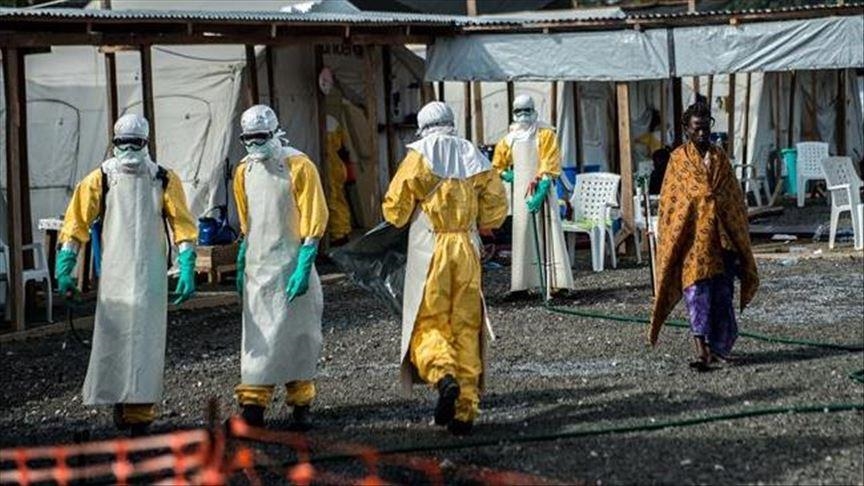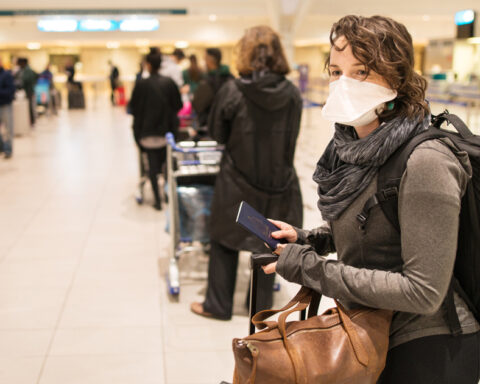The index case of the cluster was a nurse who had originally presented at a health centre in Gouécké on 18 January 2021 with headache, physical weakness, nausea, vomiting, loss of appetite, abdominal pain, and fever. She was diagnosed with typhoid. She sought a second consultation at a health facility in Nzérékoré on 23 January 2021 for fever, vomiting, liquid stools, and physical weakness, and she was diagnosed with malaria. On 24 January she consulted a traditional practitioner in Nzérékoré, and she died on 28 January 2021. She was buried unsafely on 1 February in Gouécké. The other six cases are the five family members and the traditional practitioner she visited.
Among the seven cases, five have died (4 probable and 1 confirmed). The other two confirmed cases are currently in isolation in dedicated health care facilities in Conakry and Gouécké, Nzérékoré region.
The Ebolavirus species is not yet determined. Additional laboratory analyses are on-going to ascertain virus species.
As of 15 February, one hundred and ninety-two (192) contacts have been identified, including 164 contacts in N’Zérékoré Health District and 28 in Ratoma Health District, Conakry. To date, no contacts have been reported to have travelled in neighboring countries. However, Nzérékoré is the second-largest city in Guinea and lies at the intersection of roads from Ganta (in Liberia), Danané (Côte d’Ivoire), and roads to other major hubs in Guinea like Kankan and Macenta in (Guinea). Therefore, there is concern about the exportation of EVD cases into the neighboring countries.
Public health response
On 14 February 2021, following the declaration of the EVD outbreak, the MoH of Guinea convened a crisis meeting.
The MoH , WHO, Global Outbreak Alert and Response Network (GOARN) partners, have initiated measures to control the outbreak and prevent further spread. To coordinate the response, the MoH activated the national and district emergency management committees. They also advised the public to take measures to avert the spread of the disease, and to report any persons with symptoms to seek care. Multidisciplinary teams have been deployed to the field to; actively search and provide care for cases, trace and follow-up contacts, and sensitize communities on infection prevention and control. Planned and in-progress response measures include the following:
- Identify the source of the current outbreak;
- Identify and follow-up contacts of all confirmed and probable cases;
- Isolate all suspected cases, and assure their care;
- Put in place infection prevention and control (IPC) measures in health care facilities including train staff, establish triage processes, assess PPE supplies and access to hand hygiene resources and implement protocols for environmental cleaning and disinfection;
- Conduct Assessments of health facility IPC preparedness using scorecard and develop action plans;
- Strengthen case investigation, including active case finding in health care facilities;
- Alert and inform all existing care services in the region;
- Support laboratory capacities to process specimens from suspected case in a timely manner;
- Strengthen public information and awareness of compliance with prevention and protection measures, including reporting to health services as soon as the first symptoms appear;
- Promote safe and dignified burial of suspected, probable and confirmed deaths;
- Initiate a ring vaccination strategy and vaccinate frontline workers.
- Mobilize response resources;
- Strengthen the capacity of the N’Zérékoré Ebola Treatment Centre
- Set up response commissions with the authorities and partners, including WHO, the Red Cross, Deutsche Gesellschaft für Internationale Zusammenarbeit (GIZ), UNICEF, and UNFPA;
WHO support for the Guinean authorities
- WHO will help supply vaccines, therapeutics, reagents and personal protective equipment.
- WHO will be part of the partner coordination.
- WHO will be involved in all pillars of the response, and will help to strengthen response in each area
- WHO will recruit and deploy human resources to N’Zérékoré region to support investigation, contact tracing and vaccination.
- In coordination with partners, WHO will work to reinforce risk communication and community engagement by deploying communicators and socio anthropologists.
- WHO will provide logistic support, hygiene kits and IPC materials, where they are needed.
WHO risk assessment
WHO considers the risk of spread in the country as very high given the unknown size, duration and origin of the outbreak; potentially large number of contacts; potential spread to other parts of Guinea and neighboring countries; limited response capacity currently on the ground; and unknown virus strain. In addition, there are ongoing challenges for the public health system due to the COVID-19 epidemic, and recent yellow fever and measles outbreaks.
WHO assess the risk for the region as high. The Nzérékoré Region of Guinea shares borders with Sierra Leone and Liberia, where EVD outbreaks occurred previously. Despite some movement restrictions across official border-crossings due to the ongoing COVID-19 pandemic, a significant proportion of cross-border movement continues to take place and poses a risk of EVD spread. It is therefore essential that neighboring countries assess their preparedness capacities and implement readiness/response measures.
The countries in the region should:
- Conduct preparedness and readiness assessment
- Develop preparedness and readiness plan
- Map out immediate activities
- Activate IMS for preparedness
WHO advice
WHO advises the following risk reduction measures as an effective way to reduce EVD transmission:
- Continue to train and retrain the health workforce for early detection, isolation and treatment of EVD cases as well as on safe and dignified burials and IPC measures;
- Prepare for vaccination of health workers and implement ring vaccination around confirmed cases;
- Engage with communities in responding to the outbreak and to reinforce safe and dignified burial practices;
- Ensure availability of personal protective equipment and IPC supplies to manage ill patients and for decontamination in health care and community settings;
- Ensure availability of biomedical equipment, essential medicines and therapeutics to care for patients with EVD;
- Ensure implementation of a referral system: screening and triage at health centres with referral pathways to designated Ebola treatment centres;
- Conduct health facility assessments (“Scorecard”) of adherence to IPC measures
- Reduce the risk of wildlife-to-human transmission (through contact with fruit bats, monkeys and apes) through community education on how to: Handle wildlife with gloves and other appropriate protective clothing; and cook animal products (blood and meat) thoroughly before consumption;
- Reduce the risk of human-to-human transmission from direct or close contact with people with EVD symptoms, particularly with their bodily fluids: Wear appropriate personal protective equipment when taking care of ill patients; and wash hands regularly including after any contact with patients or when coming into contact with any body fluids.
- To reduce the risk of possible transmission from virus persistence in some body fluids of survivors, WHO recommends providing medical care, psychological support and biological testing (until two consecutive negative tests) through an EVD survivors care programme.
Based on the current risk assessment and prior evidence on Ebola outbreaks, WHO advises against any restriction of travel and trade to Guinea.






